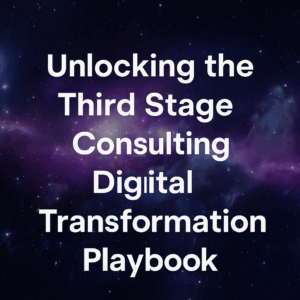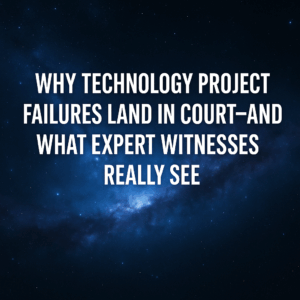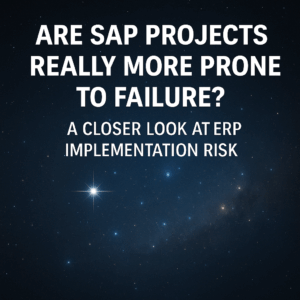When embarking on a digital transformation, it is important to define what you want to become in the future before progressing too far into the project. However, the question arises: How can we precisely define this future state?

When assisting clients with their digital strategies, one of our initial inquiries is to understand their desired outcome and future state for their organization and operations. We must clearly articulate and define our desired future state for the organization, operations, and people involved in the digital transformation. That’s what we will be discussing in this article.
Table of Contents
ToggleDigital Strategy
The first step in defining your organization’s future state is to establish your digital strategy. When I mention defining your digital strategy, I am referring to formulating the vision, overall strategy, and roadmap for your digital transformation. This doesn’t involve selecting specific technologies or undergoing the transformation itself just yet. Instead, it focuses on setting a high-level framework and vision.
For instance, when defining your digital strategy, you should consider various work streams. This includes examining your business process model at a high level, determining your desired operational and organizational strategies, and exploring technological strategies that can enable your digital strategy. These examples represent a few components of a digital strategy that need to be defined. The key is to establish a clear direction and vision for your organization, serving as the foundation for subsequent work streams and activities discussed later.
There are other examples of high-level digital strategic decisions to be made. These may involve standardizing operations across a multinational organization, adopting a more flexible organizational approach, choosing between a tier one ERP system or a best-of-breed approach, or becoming a more data-driven organization. These decisions and the corresponding strategic frameworks are essential in enabling the desired outcomes.

Future State Business Processes
Once we have a well-defined digital strategy, we can proceed to the next phase of our digital transformation. Typically, after establishing our digital strategy, we can then focus on defining our future state business processes. However, it’s a common misconception for organizations to believe that they can simply adopt new technology, and that technology will dictate or guide their business processes. While this may hold true at the transactional level or for detailed operational aspects, technology alone cannot address the strategic questions related to our business processes and operations.
For instance, we need to make decisions regarding identifying broken processes that require improvement, as well as determining key processes that align with our digital strategy’s goals. We also need to consider the existing business processes that have proven successful over the years and ensure their preservation and enhancement. Merely relying on new technology to enable these processes can potentially dilute or undermine the operational advantages we have developed over time.
The crucial step is to define the macro-level business processes, allowing us to evaluate and select the most suitable technological options that align with our future operational strategy. Once we have defined these business processes and chosen the technology, we can then use the technology to inform the more detailed, granular, and transactional workflow levels. This ensures that the lower-level processes align with and support the higher-level operational strategy.

Future State Organization
The next step is to define our future state organization, which entails determining the roles, responsibilities, reporting structures, and overall organizational structure. This work stream encompasses both the human side of change and aligns closely with the previously discussed operational and business process future state. Once we have identified our future state business processes, we can then define how people fit within those processes to ensure appropriate integration. This involves organizational design and assessing the impact of changes on job roles, which should be a crucial component of any organizational change strategy.
Defining the future state organization is significant for several reasons. It provides clarity to the leadership and project teams regarding the envisioned organization. Equally important, it offers clarity to the employees who will be affected by the digital strategy. Employees can begin to understand, digest, and anticipate changes in their job roles, reducing the ambiguity that often arises during digital transformation. Ambiguity and lack of clarity are major factors contributing to resistance to change, as they generate fear, uncertainty, and doubt among employees. Therefore, clearly defining the future state of the organization and job roles is critical for the success of the project.
Performance Measures and Business Value
There is an old adage that states, “If you don’t measure it, you won’t achieve it.” For this reason, it is crucial to have clearly defined performance measures and expectations around business value within your digital strategy. The goal is to avoid undergoing a digital transformation, investing significant time and effort in defining a digital strategy, only to discover that it has resulted in minimal or no business value, or simply reinforced existing inefficiencies. Instead, it is essential to maintain a hyper-focused and laser-focused approach, ensuring that we obtain and optimize the desired business value from our investments in new technology and changes to business processes.
To achieve this, we must establish explicit and deliberate expected performance measures and target levels of performance. By setting these metrics and expectations, we can maximize the value derived from the project not only after its implementation but also during the transformation itself. These metrics serve as a guiding North Star from a project governance perspective, ensuring that we stay on track and concentrate solely on activities that deliver the most measurable business value to the organization. Therefore, as part of defining your future state as an organization, it is necessary to define the performance measures and expected business value that you aim to achieve.
By defining and tracking these performance measures, we can ensure that our digital transformation efforts are aligned with the overall goals of the organization, and that we are effectively measuring the impact and success of the implemented changes.
Digital Transformation Road Map
Once you have completed all the aforementioned steps in this video, the next task is to delve into defining the digital transformation roadmap in more detail. At this point, we have a clear understanding of our digital strategy, our future operational state, our future organizational state, and our expected business value and performance measures. Now, we need to take all this information as input and create a digital transformation roadmap that accomplishes our desired goals.
It is crucial that this digital transformation roadmap aligns closely with the objectives outlined in the previous steps. Additionally, it should consider our current organizational identity, risk tolerance, staffing availability, budget, and time expectations. This is the phase where we refine and tailor the digital transformation plan and roadmap to suit our organization’s unique characteristics and future direction. The digital transformation roadmap serves as a significant workstream and deliverable, summarizing the entire process of defining our future state.
I hope this guidance has provided you with a clearer understanding and expectations regarding the process of defining your organization’s future state. By establishing a well-defined future state, you can develop and execute a digital strategy that best meets your specific needs and goals.
I would enjoy brainstorming ideas with you if you are looking to strategize an upcoming transformation or are looking at selecting an ERP system, so please feel free to contact me at eric.kimberling@thirdstage-consulting.com. I am happy to be a sounding board as you continue your digital transformation journey.





